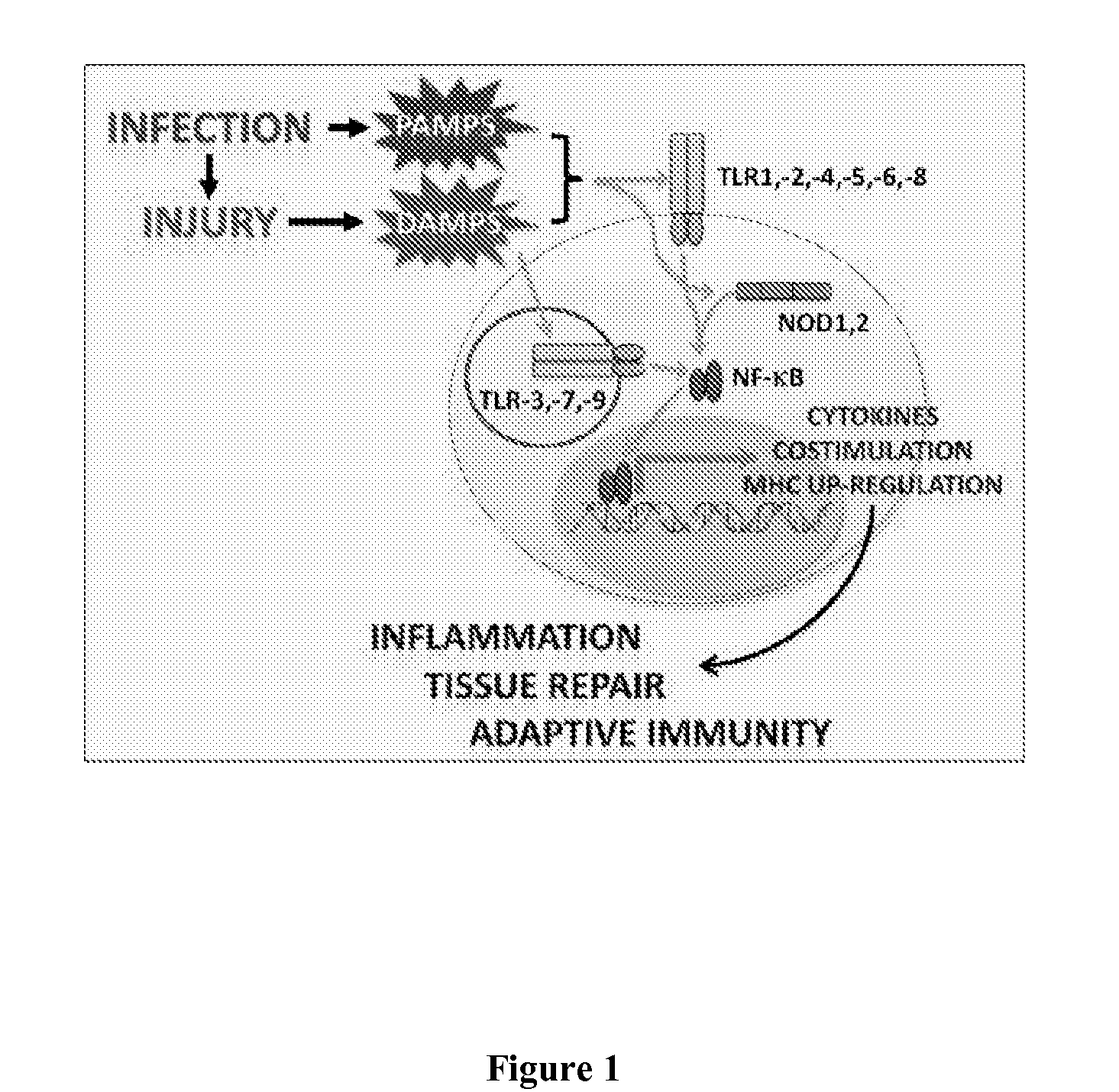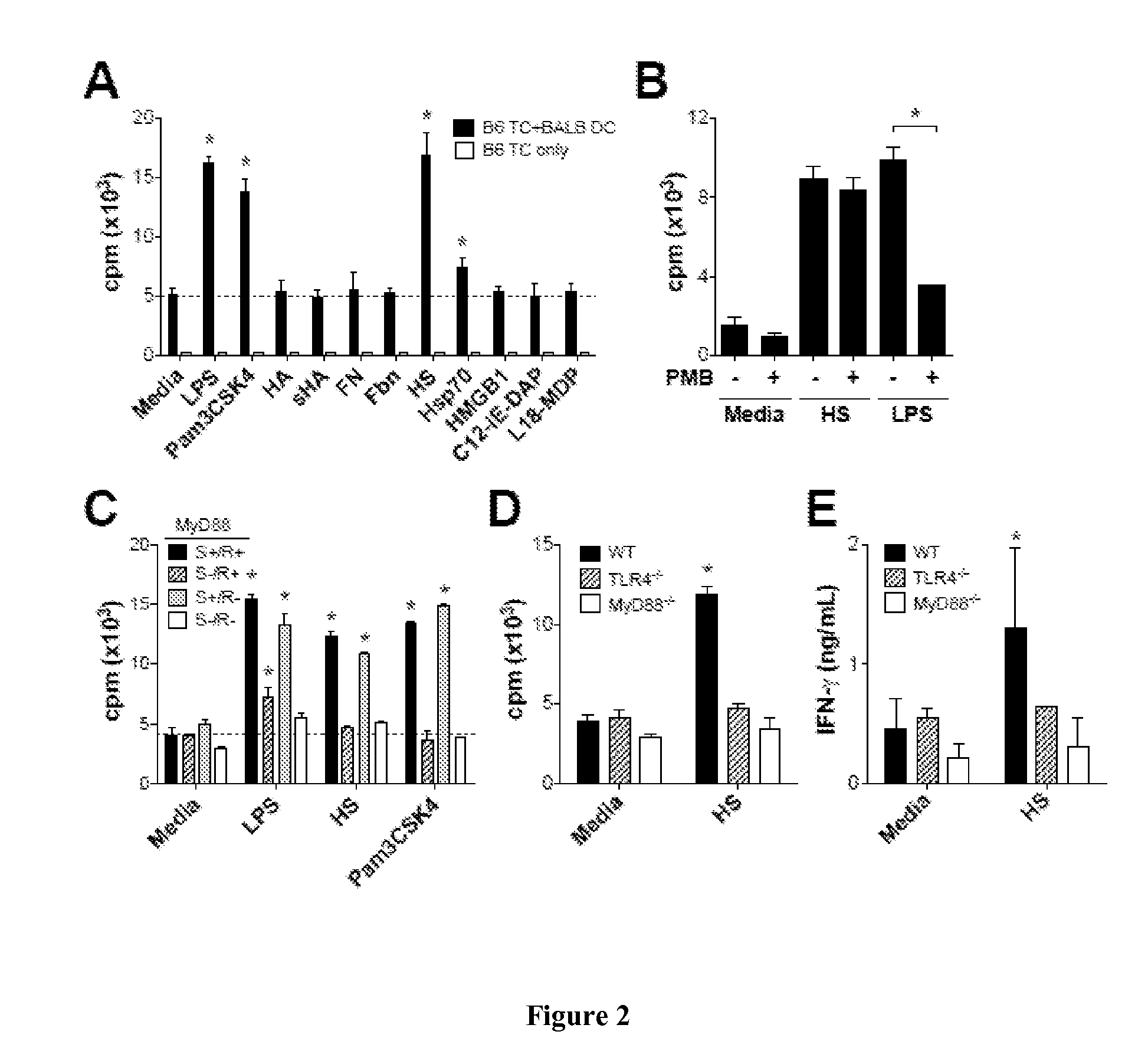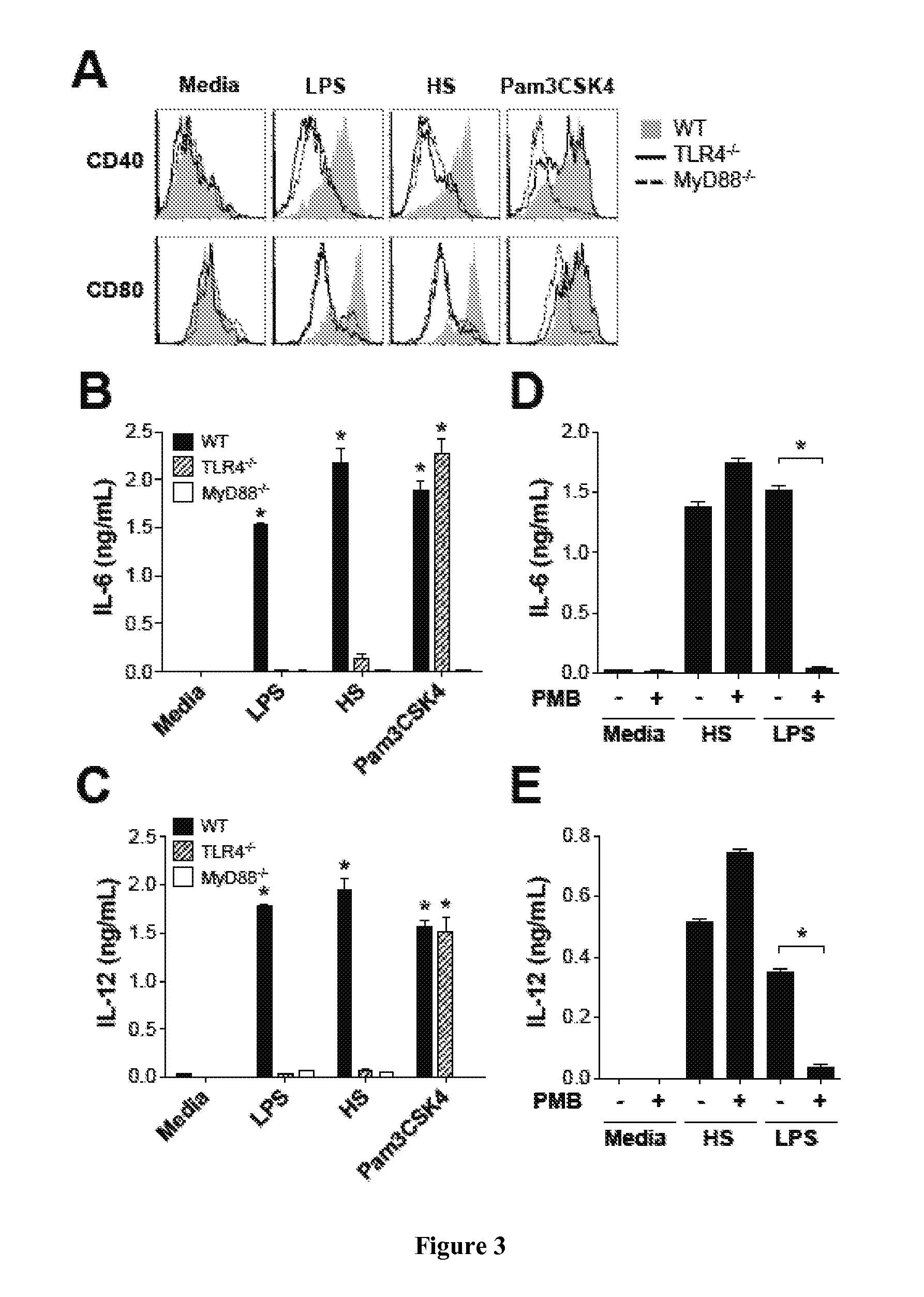Compositions And Methods For Heparan Sulfate As A Biomarker For Transplant Rejection
- Summary
- Abstract
- Description
- Claims
- Application Information
AI Technical Summary
Benefits of technology
Problems solved by technology
Method used
Image
Examples
example 1
HS Promotes Alloreactive T Cell Proliferation by Stimulating TLR4 on Dendritic Cells
[0057]To identify endogenous innate immune activators with significant contribution to the alloimmune response, various DAMPs that have been implicated in stimulating TLR pathways in promoting alloreactive T cell responses were examined. (FIG. 1).
[0058]Mice: BALB / c mice were purchased from the National Cancer Institute (Frederick, Md., USA). B10.D2 and TLR4− / − BALB / c mice were purchased from The Jackson Laboratory (Bar Harbor, Me., USA), respectively. MyD88− / − mice were kindly provided by Dr. Shizuo Akira (Osaka University, Osaka, Japan) and have been backcrossed for greater than 10 generations onto the BALB / c background. Donor mice were males between 8 and 12 weeks of age and recipient mice were males between 12 and 16 weeks of age (˜22-26 grams). All experimental procedures involving the use of mice were done in accordance with protocols approved by the Animal Care and Use Committee of Duke Univers...
example 2
HS Stimulates TLR4-Dependent DC Maturation and Function
[0067]To investigate how activation of DCs by HS promoted the alloreactive T cell response, an as DC maturation and production of pro-inflammatory cytokines are key initial events in triggering adaptive immune responses, the ability of HS to upregulate DC expression of costimulatory molecules, CD40 and CD80, and pro-inflammatory cytokines, IL-6 and IL-12 was tested.
[0068]Antibodies and flow cytometry: Anti-CD40 (HM40-3), anti-CD80 (16-10A1), anti-Thy1.1 (OX-7), anti-Ly5.1 (A20) anti-IFN-γ (XMG1.2), rat IgG1 isotype (R3-34), and the BrdU Flow Kit (FITC-labeled) were from BD Biosciences (San Jose, Calif., USA). Intracellular IFN-γ staining was performed as previously described. (Brennan, T. V. et al. (2008) Transplantation 85:247-55). For in vivo BrdU labeling, mice were injected with 50μg BrdU / gm i.p. 1 hour prior to analysis. Collection of flow cytometric data was acquired using a FACSCanto (BD Biosciences), and events were anal...
example 3
Serum Levels of HS are Elevated at the Onset of GVHD in a Murine Model of Allo-HSCT
[0076]To investigate the in vivo relevance of HS in the setting of alloimmunity, serum levels of HS were tested in a mouse model of GVHD in the setting of Allo-HSCT (FIG. 6A).
[0077]Allo-HSCT: For Allo-HSCT, wild-type (WT) and TLR4− / − BALB / c mice received myeloablative total-body irradiation (8.5 Gy) followed by intravenous infusion of 1×107 B10.D2 or BALB / c T-cell depleted bone marrow (TCD-BM). Bone marrow was prepared as previously (Yang, Y. et al. (2004) Nat. Immunol.5:508-15) and the T cells were depleted using Thy1.2 (Invitrogen, Carlsbad, United States) or CD5 (Miltenyi Biotec, Auburn, United States) conjugated magnetic beads according to the manufactures' instructions. To induce GVHD, 5×106 lymph node cells from inguinal, axillary, cervical and mesenteric lymph nodes of B10.D2 or BALB / c mice were injected intravenously in addition to TCD-BM.
[0078]In another model of acute GVHD, 5×106 lymph node ...
PUM
| Property | Measurement | Unit |
|---|---|---|
| Time | aaaaa | aaaaa |
| Concentration | aaaaa | aaaaa |
| Concentration | aaaaa | aaaaa |
Abstract
Description
Claims
Application Information
 Login to View More
Login to View More - R&D
- Intellectual Property
- Life Sciences
- Materials
- Tech Scout
- Unparalleled Data Quality
- Higher Quality Content
- 60% Fewer Hallucinations
Browse by: Latest US Patents, China's latest patents, Technical Efficacy Thesaurus, Application Domain, Technology Topic, Popular Technical Reports.
© 2025 PatSnap. All rights reserved.Legal|Privacy policy|Modern Slavery Act Transparency Statement|Sitemap|About US| Contact US: help@patsnap.com



